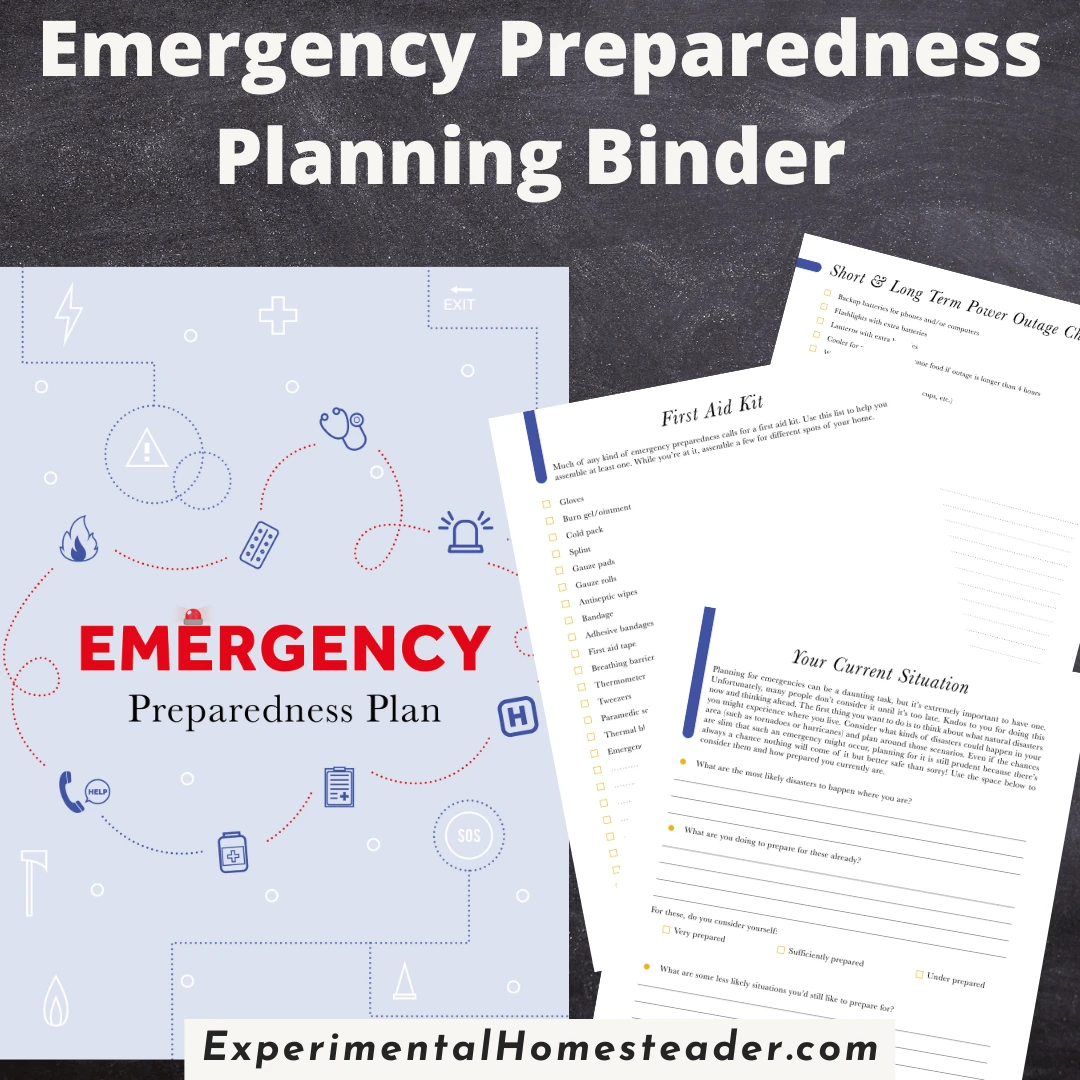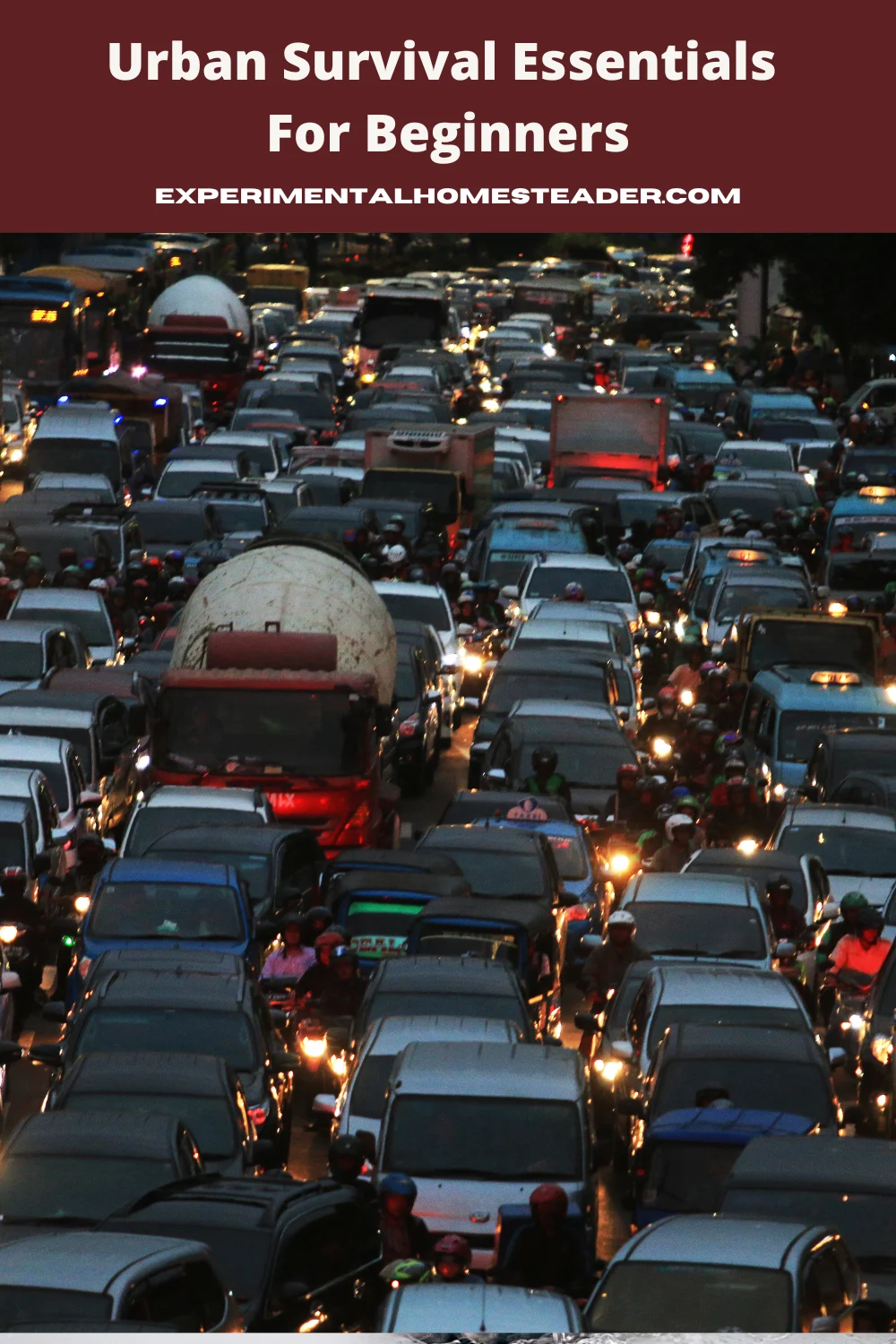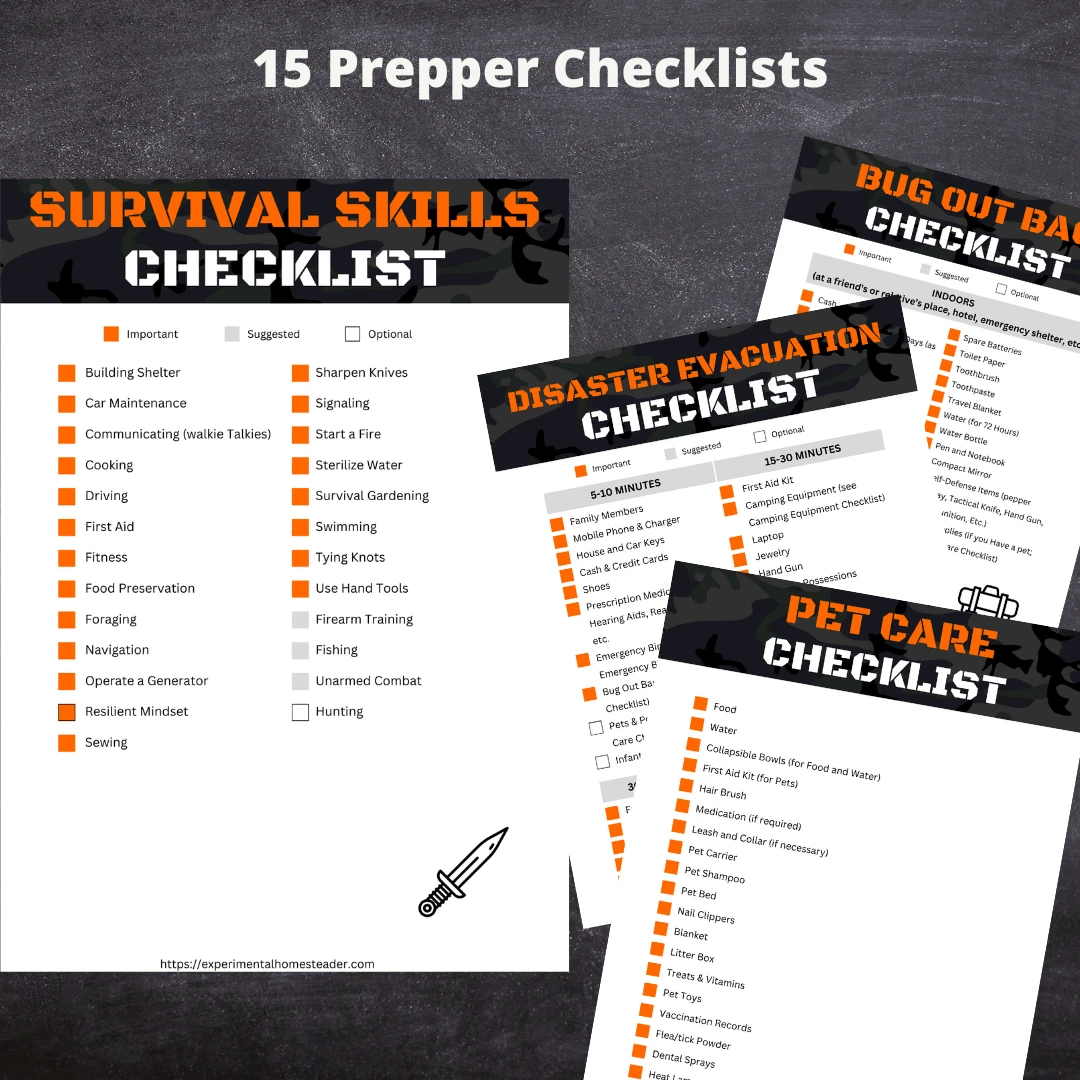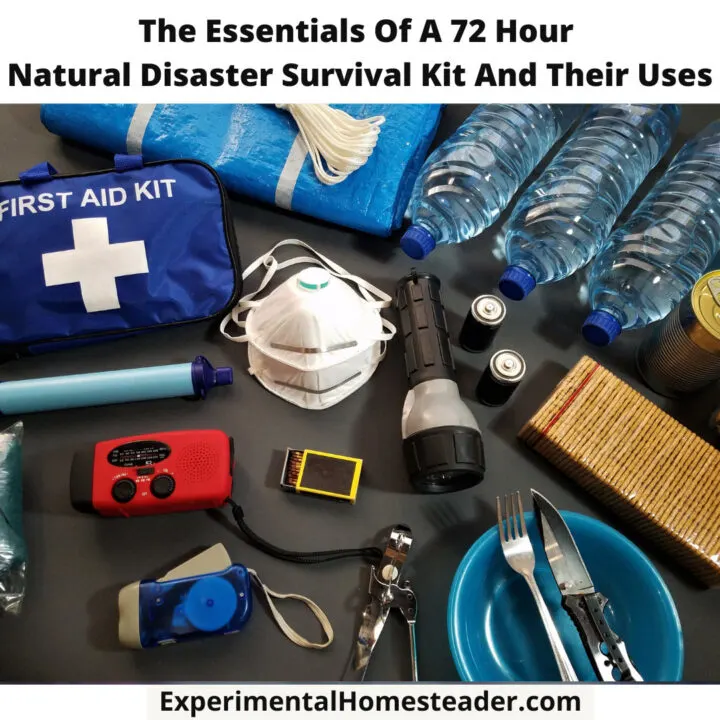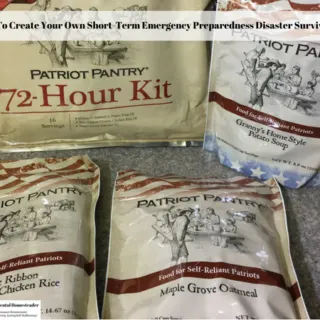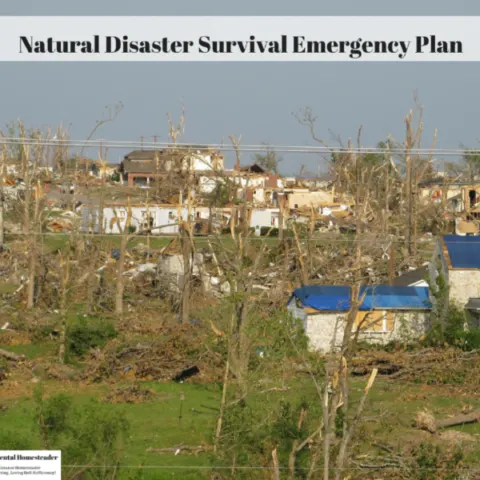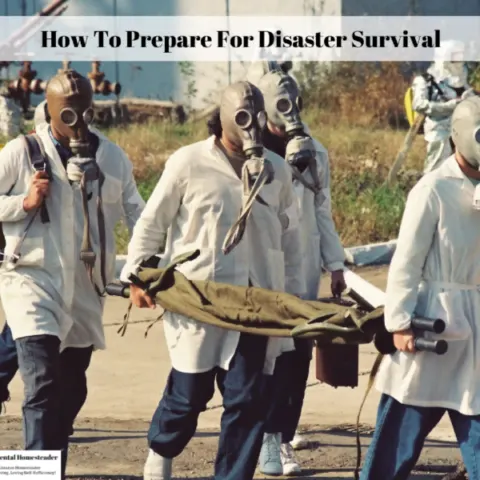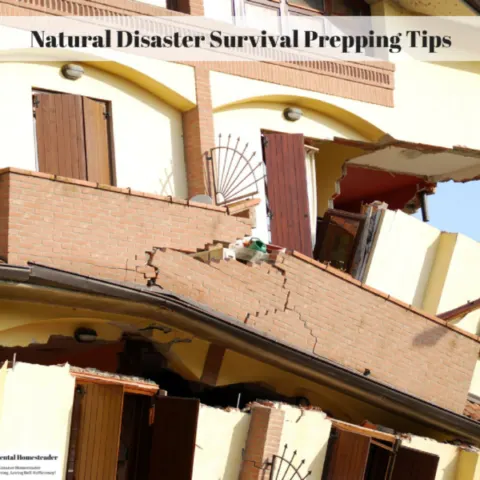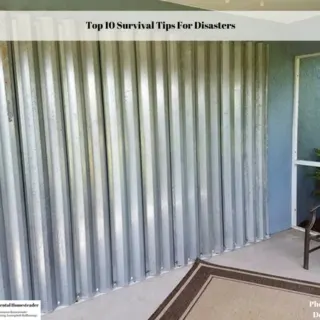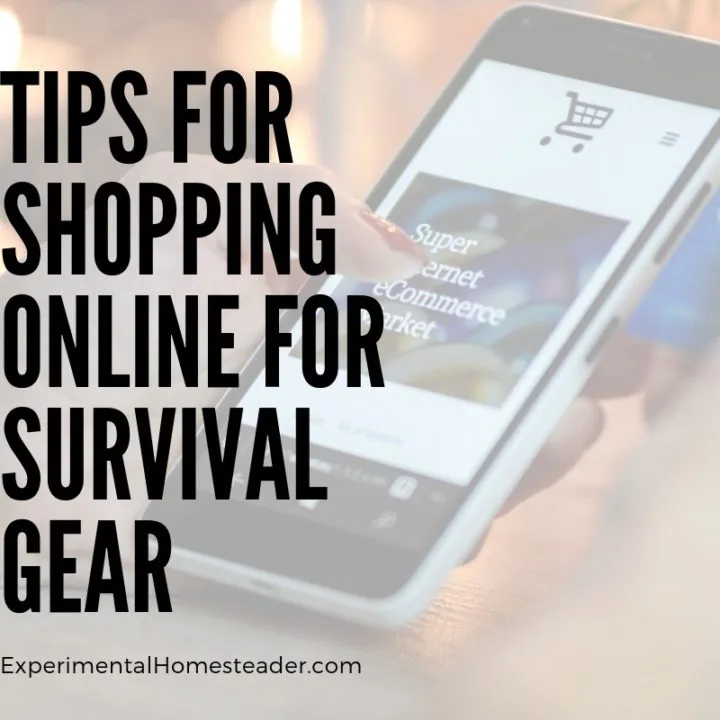When it comes to urban survival essentials for beginners, there is a lot to consider and of course, your needs are different from those living on land of their own outside city limits.
When most people discuss prepping and survival strategy, it is framed in the point of view of someone living in a rural or suburban area with plenty of room to keep supplies and quick access out to the wilderness, if such action is needed.
However, most people reside in big cities, live in small apartments and near crowded roads, which you can't easily get out of in an emergency situation.
This type of area requires different survival strategies for the variety of situations you might encounter.
The challenges faced by urban and rural preppers differ greatly.
You have to know how to plan, store and escape any situation without struggling.
Even if you don't reside in an urban area, you might work in one and you never know when a SHTF situation might occur during hours when you're trapped downtown and need to be quick on your feet to survive.
Building Up Food Storage In Small Spaces
One of the biggest disadvantages of living in an apartment is the lack of space.
While this is a minor inconvenience most of the time, it can become a real setback when you start trying to stockpile things like food and water for long-term survival.
In a typical house, you would be able to use places like a basement, extra room, attic or unused closets for food storage, and not have it get in the way.
In an apartment, though, you are probably already feeling cramped as is.
Since you don't want your food stockpiles just sitting out in the middle of the room, you need to get a bit creative in trying to find places where you can keep food stockpiles, places that are cool and dry most of the time.
One great spot that you might not be using is under your bed.
Some bed frames offer plenty of room underneath your mattress that can be used to keep a decent stockpile of food.
This spot can also easily be concealed by draping a coverlet or sheet over the side of the bed.
If you have a living room space, your couch can be pulled forward a bit to make room behind it for additional storage space.
It's important to keep your food stockpiles hidden out of plain sight, especially from people like landlords or repairmen who might make note of your place if they know you have an active stockpile for when things go wrong.
You should also consider any precautions you need to take based on how clean your apartment complex is.
You may have to get creative with some items, but things like bags of rice or cans should fit pretty easily behind the couch.
Just be sure to put them in a plastic or metal container of some type just in case of mice or a bug infestation.
Many apartments aren't well maintained and may have pests like cockroaches, in which case you should seal off foods you are storing in plastic bins.
When dealing with pests you can also use a variety of pest control products around your food storage areas to keep them out.
For example, diatomaceous earth is a fine powder that is safe to use around pets and humans, and it keeps crawling insects out of important areas.
Keep Compact Necessities Around
With limited space being an issue, you will may run into problems keeping the right tools on hand.
While you can keep a sizable tool chest in the garage of a full sized home, you need something much smaller in an apartment.
Luckily, there are tons of small, compact tools available for people who don't have much space to keep a variety of items on hand.
Some of these items are meant for hikers and backpacking enthusiasts, but the important thing is that you have the tools you need on hand and that they work when you need them to.
All of these tools mentioned below could easily fit into a small drawer.
First off, you should get a nice multi-tool.
This is something that you really should splurge on, since a high quality multi-tool can cover a ton of different needs and will last you a lifetime.
Look for one with built in necessities like a knife, pliers, screw drivers, saws, and so on.
If you get one that is well made, it should be able to stand up to just about any challenge you give it, and it can fit in your pocket with ease.
Another small tool you should keep around is a Ferro rod.
These are commonly advertised simply as "fire starters" and can be used in conjunction with a knife to produce sparks, allowing you to start a fire if you need to.
While it is unlikely that you will end up needing to start a fire in an urban survival situation, it is not entirely out of the question.
Ferro rods don't take up much space, and it is worth having in the rare case that you need to use it.
You don't want to use it indoors, but you might be able to go to a rooftop or porch/patio and use a metal can to create a small fire you can use to cook with, warm up to, or even use as a signal for help, depending on what kind of survival situation you're in.
Things like thin paracord and fishing line can be wound up so that you can have a ton of it in a small space.
These types of items are very useful for simple repairs, keeping stuff bound together while traveling, fishing and more.
Another often overlooked item you can have in your toolkit is a list of important survival tips to remember.
A few pieces of paper takes up practically no room at all, but you can fill your notepad out with tons of important information.
This is so beneficial to do because once a survival situation starts, there is a big chance you won't have access to the Internet.
Writing down important information, important phone numbers or having printed maps on hand can make a huge difference in your survival success.
A compass is a small item that can absolutely save you while trying to navigate a complex city.
Most compasses made now are very small and lightweight, and you can use it along with a printed map to find your way around the city on foot or in the car.
If you live in a city by water, whether it be rivers, lakes, or the ocean, you should keep a variety of fishhooks in a small container and maybe a fishing bobber or two.
It is not a glamorous setup, but with some line and a hook, you can manage to catch fish for food if needed.
How To Have Portable Clean Water Access
Out on large ranch properties or in homes with big backyards, people can set up things like rain collection bins and keep purified rainwater for emergency water supplies.
Even in smaller homes, stockpiles of bottled water can work.
In small homes or apartments, you are going to need something portable, since you're not likely going to be able to store enough water to keep everyone in your family sustained for extended periods of time.
One great option is water filter straws.
Multiple brands make these handheld water filters that allow you to get clean drinking water from any source.
They should fit conveniently in a backpack or bug out bag, allowing you to take them anywhere.
Something you could do on the move is fill up a large water bottle with water you find, and then use the filtration straw on the collected water whenever you need a drink so that it is guaranteed to be pure, no matter where you got it from.
Another great option is to buy a few packs of water purification tablets.
These little pills can be put into a large bottle of water, and given the right amount of time for them to work, will kill off any germs that may have contaminated the water you collected.
When using these pills, be sure to follow the directions exactly regarding how long to let it sit, how many pills to use per a certain amount of water, and so on.
If you use too little or don't let the water sit long enough, there could still be disease-causing germs in the water.
Water purification tablets sometimes come in glass bottles, so you may want to wrap them in something like a t-shirt if you are putting them in a backpack so that they will stay safe.
If the bottle breaks, the tablets won't be as effective having been left in open air.
Or, put them in a plastic, waterproof container so that you don't have to worry about that at all.
There are plenty of waterborne diseases that you could contract if you don't have access to clean water.
These diseases can cause a wide variety of symptoms, some are minor and some are quite dangerous.
If a survival situation were to occur in a large city, it is likely that the city's water supply would either be cut off, or would be flowing, but not purified.
In either case, it is crucial that you are able to get your own clean water.
Dehydration is a dangerous thing to have to deal with in a survival situation.
People can only go around three days without water before it starts to become extremely dangerous.
By always having access to clean water, this shouldn't be a worry for you.
Never let anyone know you have these water purification options on hand because if they're desperate, they may take them from you.
Prepare For Common Urban Area Hazards
The types of dangers you will find in an urban setting during a survival situation compared to a rural area are quite different.
Instead of worrying about things like animals in the wilderness, you have a whole different set of problems to be concerned with.
The first thing you should be wary of is the people.
Even if you don't live in one of the largest cities, a city is still full of people who, when times turn tough, can act very unruly and dangerously.
You will see this in action all the time whenever there is a weather emergency, natural disaster or before any major event.
People rush into stores and clear the shelves off, and sometimes act very crazy - even occasionally getting into fights.
If something much more severe were to happen, the scene at stores would be even worse than that.
You would undoubtedly see people fighting over crucial supplies like food and water, which is why it is important for you to stay stocked up in advance and not have to make a run for things you need at the last minute.
Another hazard to consider is traffic.
Major cities already come to standstills with traffic during rush hour without any survival situations going on.
If something happens to go wrong, the streets will be packed and you may see people driving off-road to escape.
People driving up onto sidewalks or across medians is naturally dangerous for any pedestrians trying to leave the city on foot.
If you were to be injured by a panicked driver, you would have a difficult time finding the necessary medical attention.
If the streets are completely packed and nobody can move, then you wouldn't be able to escape via car, either.
This depends a bit on the nature of the survival situation or emergency, but for something like a natural disaster, this could be very dangerous.
In the event of various natural disasters, the city can actually be a very dangerous place to be.
For example, tornadoes are very common in rural areas in the United States, and rarely completely hit houses since they occur out in sparsely populated areas.
However, if one were to hit a city, it would be extremely dangerous because of the amount of debris getting swept up by it.
Broken glass, bricks, and all kinds of garbage could be thrown around in a tornado, making it much worse.
Floods are another natural disaster that are worsened in cities.
While floods can occur out in rural areas, it tends to be rare, and the flood subsides quickly since much of the water can be absorbed by dirt or funneled off into rivers.
In a city, despite the drains they have in the streets, floods can still occur somewhat easily in torrential weather.
Drains in city streets can quickly get clogged up with debris, and the concrete doesnít absorb water at all.
This leads to a greater chance of long term standing water flooding in city areas.
This makes it almost impossible to leave your building, and buildings that aren't built to handle it may start to let in water, causing property damage.
Since leaving is not a guaranteed option in urban survival situations, you must be prepared to be able to stick it out wherever you are.
This includes having a food supply and access to clean water, so that you don't have to try to risk injury for the essentials.
Defending Yourself In Urban Survival Situations
Given that one of the biggest threats in an urban area survival situation is other people, it is important that you know how to defend yourself.
There are many aspects to self-defense that you need to know in order to stay safe.
Depending on the situation and the severity of it, you have to watch out for other people who might want to rob you of money and supplies, or even those who have decided they just want to harm you.
The first and most useful skill to know for self-defense is threat evaluation and risk management.
Instead of blindly running around hoping you don't run into anyone dangerous, being careful can keep you out of these situations to begin with.
By avoiding anyone that looks shifty, and avoiding areas that people could ambush someone from, you can eliminate the possibility of putting yourself in a bad situation from the get go a lot of the time.
Additionally, going out only with a friend or in a pair can help stave off anyone working alone.
They would rather wait to find someone walking around by themselves than try to take on two people at once.
However, you must be ready to take on a self-defense situation in multiple ways if you do get forced into such a situation.
Usually the reaction you have will either be to fight or to flee, and there are different strategies for both.
If you decide to run, you might be able to lose someone fairly easily in a city setting.
With tons of intertwining streets and back alleys with all sorts of nooks and crannies, running away wouldn't be a bad option if you can outrun them.
On the other hand, if you need to stand your ground, you need to have something on you that you can use to defend yourself.
There's are a few different weapons that you can choose from.
Stun guns are fairly affordable.
They are handheld devices that send a strong electric current through two prongs, and when you touch someone with it, it shocks them.
However, you must know how to use this device as it can be deadly.
A pocket knife is another option, though this shouldn't be taken lightly since it can cause serious, permanent damage to your would-be assailant.
Bear in mind that both this and the stun gun must be used at a range where you're touching the person, which may not be ideal.
There are also two other options available that allow some distance, the first being pepper spray.
Pepper spray is extremely effective, and is able to render someone unable to see clearly for up to an hour.
Finally, there is the option of a concealed carry handgun or other firearm.
This, of course, depends highly on where you live, as they are not legal to have in all areas.
Where they are legal, they are good options for defense, though they are expensive and it is best to get training to use your gun, make sure you have all the proper permits and understand gun laws.
It is always best to leave the situation and get to safety instead of using a weapon of any kind if that is an option.
Get Your Body Ready For Survival
Being physically active and in good shape is one of the best things you can do to prepare for a survival situation, especially in the city.
Many people greatly overestimate their physical abilities, and in an emergency, that can be costly.
One of the simplest things you will need to do in an emergency situation is walk for long distances.
If you decide to leave the city with your supplies on foot, since all the roads may be full, you could be talking about walking 10 or more miles with a full emergency evacuation bag.
That is much harder than most people realize.
Within the city, there are scenarios where being physically fit are of great importance - for example, climbing a flight of stairs up to the top of a building to escape a flood.
Being too slow could leave you fighting against the waters, an awful situation to be in.
Just the simple act of doing one pull up is asking a lot of most people.
Being able to pull yourself up onto a ledge could prove useful or even life-saving in all kinds of survival situations when you are in a big city.
There is also the matter of not being used to eating what you want when you want.
In a time of crisis when food supplies are low, you will need to be comfortable with eating a real bare minimum amount of food just to stretch out your food supplies.
Keeping your heart and cardio systems healthy also helps prevent stress related diseases during an emergency.
In survival situations, stress runs high and can cause anything from heart attacks to strokes in those with poor health.
If you are unsure of how to start getting physically fit, talk to your doctor, then start out with a simple cardio and bodyweight exercise routine.
If done consistently, this can help keep you in good enough shape to deal with most survival situations.
Know The Area Around You Inside and Out
One of the best things you can do for yourself to prepare for a survival situation in a city is memorize the layout of the city to the best of your ability.
Knowing - not only what roads lead where - but also what exact buildings are around you is very valuable.
There are many survival situations in which you might be left without electricity or access to any Internet to view maps of the area.
Knowing what buildings have what supplies is going to make surviving much easier.
This should be done in baby steps for the most part.
You are going to get overwhelmed if you try to learn the entire layout of a major city all at once.
Start off by learning everything you can about the area within a certain radius around you.
If you live in an apartment complex, figure out what each building immediately next to your complex is.
It might be things like convenience stores, auto shops, or offices depending on where you live.
Information like that can come in handy because if you really needed to, you might be able to take supplies from places like that, assuming a complete worst case scenario has occurred.
If it is a more minor survival situation, you are not going to have to resort to that.
Knowing the layout of roads around you is also important for a variety of reasons.
In a self-defense situation where you are trying to get away, you don't want to be caught running down a dead end or anything.
By knowing the roads around you, you also eliminate the need to waste precious time staring at a map or trying to figure out which way you should go to get to a certain spot, and you will always know how to get back home if you go somewhere new.
You can practice learning the area around you by walking different paths and streets nearby each day.
By learning how everything connects in city streets, you can get a greater idea of the layout than you would just staring at a map online.
Be patient when you are first starting off.
Learning something new like that doesn't come easily, and it is going to take some time before everything clicks into place.
Once you learn the city layout, though, you won't quickly forget it.
First Aid Items You Need In The City
Having a well prepared and full first aid kit is a great way to better your chances of survival in just about any survival situation.
In the city, there are multiple ways you could hurt yourself, just as you could out in the wild.
In extremely rural areas, you are going to see more things relating to bug and animal bites, and the occasional twisted ankle or scrape from a fall.
In the city, though, there are slightly different hazards around you.
For example, there is going to be a more common threat of broken glass.
You are going to want things like disinfectants, bandages, gauze, and possibly even a suturing kit.
Cuts can be extremely common from broken glass and damaged metal.
Since cuts or similar wounds are going to be your most common threat, you should try to find a first aid kit that has a wide variety of different bandages, from small adhesive ones to large wrapping ones, as well as gauze.
You should also have items on hand to deal with the possibility of infections.
Cities are usually quite dirty already, and in a survival situation, it would only get worse.
There are a variety of things you should keep on hand to prevent infections in wounds.
First, there is simple antibiotic cream.
This can be found in just about any store, and works well under bandages to prevent any infections.
Second, there is alcohol pads, which are very useful for cleaning wounds before dressing them.
Some form of lidocaine gel can also be very useful.
This is most often used to treat things like burns to help relieve pain.
Since fires could be found in alleyways in a city without power, having some burn relief on hand would be wise.
A few brands produce malleable splints that you can roll up and even reuse, something that would be a great addition to any first aid kit.
A broken or otherwise damaged limb can be dangerous if not handled correctly.
By using one of these splints, you can quickly and easily stabilize the limb, and wrap it up with bandage to hold it in place while it heals.
Since there are a lot of places you could fall from in a city, being able to handle these kinds of injuries is crucial.
Something convenient that you could keep on hand in your first aid kit is generic pain relief medicine.
Things like ibuprofen that help relieve general pain will always come in handy.
If you or anyone in your family has allergies or special medication they need to take, or specialized equipment to use, it is worth stocking up on that in your first aid kit, or possibly even having a second kit dedicated entirely to that.
Having multiple epinephrine shots on hand would be wise for someone with severe allergies.
You never know what you might run into while looking for necessary supplies, and what might trigger a severe reaction.
Specialized medication, particularly prescriptions that you might need to treat serious diseases, are worth having in your first aid kit as well.
Talk to your doctor or physician about getting an extra supply of your prescription to keep on hand just in case of an emergency situation.
Be aware that insurance might not cover the cost of these prescriptions, but it still might be worth the investment should you ever need it.
I do recommend rotating prescription medications just like you would food so they do not start to lose their effectiveness.
Pros And Cons Of Urban Living In Survival Situations
While there certainly are drawbacks to living in an urban area during a survival situation, it is not entirely a negative thing.
There are certain advantages that you can use in your favor, as well as some things that are better out in the country.
One of the biggest pros is that, if you live in a major city, you are likely going to get governmental emergency attention first and foremost.
Things like rescue crews, FEMA, and others will be at your service to help you.
While this doesn't mean that they won't help rural residents at all, it is just not likely that they are going to be able to do much in areas where there is one house every half-mile.
In a crowded city, they can rescue tons of people at the same time.
These rescue operations aren't guaranteed, though, so don't put all your hope into that alone.
Sometimes, it can take days to get everyone out of a dangerous situation, or in some places, they might not show at all.
Certain severe weather formations are far less likely to occur in cities than in rural areas.
Tornados, for example, are common in the American Midwest, but often dissipate quickly as they approach major cities.
One aspect of urban living that is both a pro and a con is the dense population.
In some instances, the high number of people living together can band together and help one another through tough times.
There have been instances of people in urban areas working well together to help each other in emergencies, though this isn't always the case.
If the people around don't want to help each other, they can be potential threats to one another.
In certain survival situations, such as a pandemic, city living is inherently worse since you are close to so many other people.
Being in close proximity greatly increasing your chances of contracting something compared to someone living in a rural area.
Some rural areas have far fewer disease carrying pests, as well.
Cities can have infestations of rats, flies, mosquitos, and other varmints.
This isn't to say that animals in rural areas are all disease free, but rather that they appear in smaller quantities.
There is the obvious drawback of the lack of space in the city when it comes to store supplies.
In a rural property, you could have a separate barn devoted to supply storage, with all the space you could ever need.
In a studio apartment, you are low on space from the start.
Suburban living often provides people with the best middle ground between the space given by rural areas with many of the pros of urban living in general, particularly increased population density.
Be Ready For Various Survival Situations
One of the worst mistakes you can make as a survival prepper in any capacity is to put all of your resources toward one single situation that you assume is going to occur.
There is a wide range of things that can happen, and you need to cover plenty of bases.
While nobody is expecting you to be able to prepare for every single survival situation, there are things that you can do to prepare for multiple different scenarios.
For example, having plans for staying put versus bugging out.
If all of your supplies are bulky and meant to be used right at home with power available, you are going to be in a bad spot if the power grid goes down or if you have to leave and be on foot for a long time.
It is recommended that you start out by creating a bug-out bag, something full of solid supplies that you can grab and take with you at a moment's notice.
This will have the bulk of your supplies in it.
However, once you have done that, you can prep for things to use if you're trapped at home, whether it be during a pandemic or an extended case of severe weather such as a blizzard.
At-home preparations include greater supplies of food, specifically non-perishables, since you are going to be keeping them on the shelf for long periods of time without actually using them.
You should also prepare for multiple weather conditions that you might be faced with.
Not every survival event is going to occur during ideal weather conditions.
You might be dealing with rain, snow, or extreme heat.
Having proper clothes to deal with the elements is essential.
If you got stuck in an area in extreme cold weather conditions without power, and without the necessary clothes for it, you could really be in trouble.
There is also the possibility of a survival situation going on long enough to pass through multiple seasons if it were an absolute catastrophe.
By being prepared for multiple situations, you will be able to handle events like this as time goes on.
You should also prepare for the different possibilities involving the threats you could be facing from the survival situation.
It might not be weather-related at all, but could instead be an invasion from another country or a spree of people attacking one another.
Don't let the wide variety of situations overwhelm you, though.
Consider what the most likely dangers are that you could face, and prepare for those first.
Over the years to come you can continue preparing for various things, but go for what is most realistic to start.
A benefit of considering multiple situations is that by taking a more active approach to the potential threats you face, you are thinking about it more and are going to be ready for it when it arrives.
If you aren't living in an urban area, but frequently enter one for work, you need to have different preparations ready.
If you drive into the city, make sure you keep a stocked bug out bag in your trunk.
You might be able to use some of your office space to keep enough supplies to help you until you can escape the city and make it back home to the suburbs or rural area you're coming from.
Make sure you learn more than just the route you always take to and from work.
People who live in the area might know the streets like the back of their hand, but you also need to familiarize yourself with the area.
Have a plan to meet up with loved ones whether they are working or going to school in the city, or back home waiting for you.
Keep in mind that your normal communication tools may not work.
Remember that when 9/11 happened, loved ones were unable to reach each other by phone due to the system being overwhelmed.
Make sure you get to know a few friends in the city well enough that you could turn to them in a major emergency for help, if needed.
Urban living can be wonderful when you want to live close to work and don't want to deal with owning a car.
But in a survival situation, you have to savvy to what is happening around you so that you are able to get by without incident.
Natural Disaster Emergency Readiness Tips
The Essentials Of A 72 Hour Natural Disaster Survival Kit And Their Uses
Learn what items are essential to put in a 72 hour natural disaster survival kit. You will also learn what those items are used for.
How To Create Your Own Short-Term Emergency Preparedness Disaster Survival Kit
An important part of survival prepping is being ready for any situation - long or short-term. Start prepping today by creating your own short-term emergency disaster survival kit!
Natural Disaster Survival Emergency Plan
Do you have a natural disaster survival plan in place? If not, here are some great survival tips for disasters that you can use to formulate your plan.
How To Prepare For Disaster Survival
Now is the time to learn how to prepare for disaster survival! Disaster prepping helps with everything from nuclear threats to natural disaster survival.
Natural Disaster Survival Prepping Tips
Natural disasters happen everywhere, sometimes with no advance notice. Check out these survival prepping tips and start prepping for survival now!
Top 10 Survival Tips For Disasters
Being prepared for disaster survival is essential. Check out these ten survival tips for disasters and start preparing today!
Tips For Shopping Online For Survival Gear
If you're thinking of buying supplies for an emergency situation or natural disaster, be sure to check out these tips for shopping online for survival gear.



